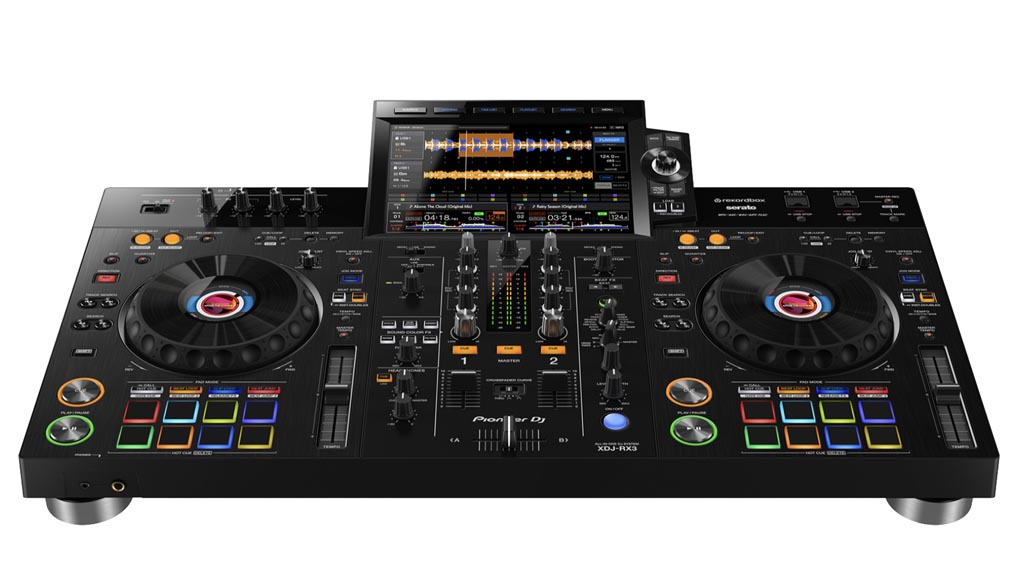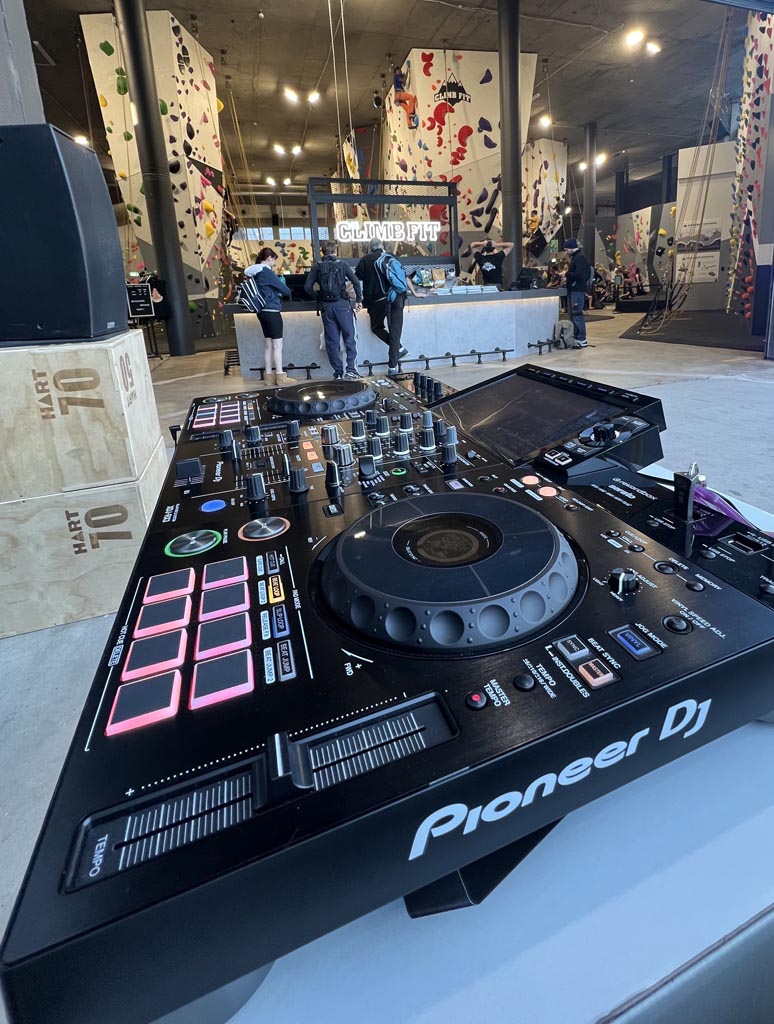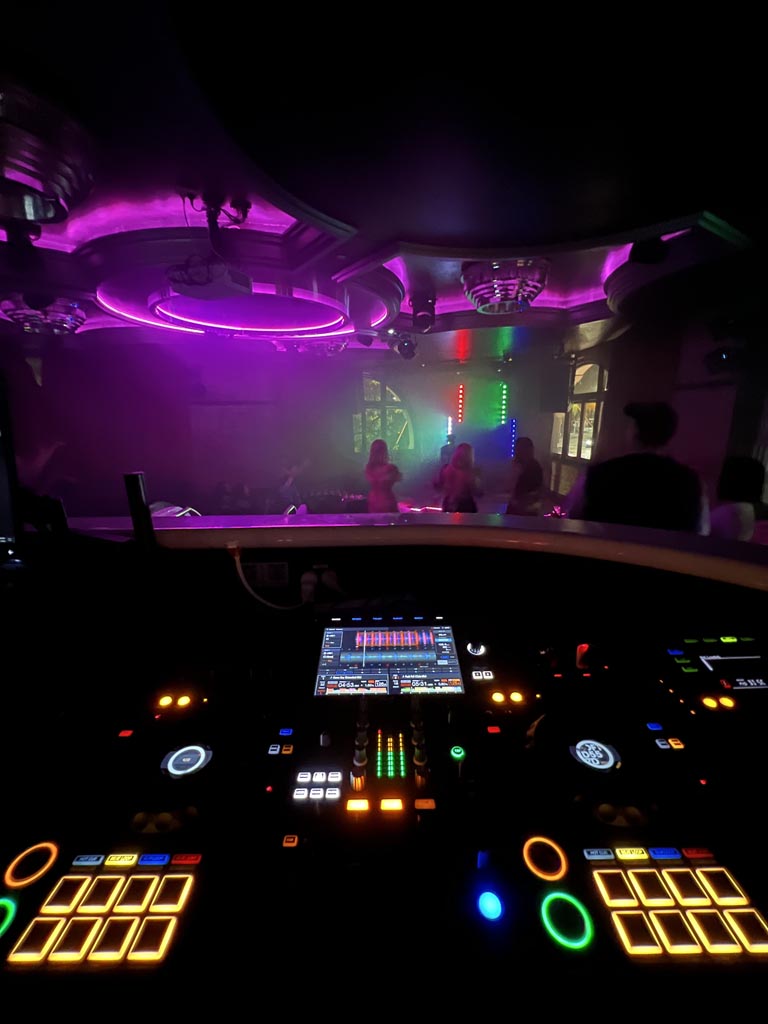ROAD TEST
2 Mar 2023
PIONEER XDJ-RX3

Subscribe to CX E-News
A long time ago, I played DJ sets on a pair of Technics portable CD players and a 4 channel Behringer mixer. I lugged them around along with a big roadcase of CDs, and wrote all the track lengths on stickers on the back of the jewel cases. That was how track analysis worked in 1998. Fast-forward a few decades and you can carry an entire collection of music on a single USB stick, along with BPM, key waveform and hotcue data. What a time to be alive.
The Pioneer XDJ-RX3 is an ‘all in one’ DJ performance system which incorporates two playback ‘decks’ and a two channel mixer into a sleek single unit. At close to the size of a pair of standalone players and a mixer it’s more on the substantial than compact side, but considering the feature set it offers, I think its size and 9.3kg weight are probably justified. Plus the size helps you feel like you’re getting more for your money.
Looking on the back panel the main stereo main output is via twin balanced XLR, and there’s a booth output on dual TRS as well. If you’re a weekend warrior playing a house party there’s a secondary RCA main output too.
There’s also a USB-B port so you can interface it to Serato. Two USB-A ports are on the top face of the unit, with STOP buttons adjacent to allow safe ejection of connected media.
While the XDJ-RX3 is sold as 2-channels, it kind of does a bit more. There are two faders, with trim, lo/mid/high EQ, filters, and CUE functionality, but each channel also has an input selector allowing you to switch its source from the internal player to an external line or phono input. There are connectors for each type of source for each channel, and there’s even a grounding lug for turntables. Additional to these inputs two combo XLR/ TRS connectors provide mic inputs. Round the front are paired 3.5 and 6.35mm headphone sockets. This IO format is basically identical to what you’ll find on standalone mixers. The XDJ-RX3 adds an auxiliary input with twin RCA and 3.5mm connector, which just has an input select switch and trim knob. I like that the power supply is internal and fed with a simple IEC cable – way better than having an external unit to lose.
Two playback ‘decks’ flank the mixer and these support files in MP3, AAC, WAV, FLAC and AIFF formats. Content can be loaded from a single USB stick to either player, an operation achieved via the 10.1” touch screen (the screen is a huge improvement over the earlier generation units), and adjacent rotary encoder. In the browse view, you can touch the miniature waveforms to solo any track in the list at that point after turning on the cue link function, so you can cue a track even while you are playing two others.
Navigation of the screen is generally intuitive, though from time to time I found myself trying to swipe or press a function on-screen that actually required a hard button press. Physical keys above the screen shortcut the way to choose sources from either USB port or a connected computer running rekordbox, as well as take you to Browse, Search, and Playlists. Once you find a song you want to play with the rotary encoder, either tap the hard buttons beneath it or the on-screen option to load the track to a deck. There’s a pop-out info page to see more detail about your track. With the exception of navigating both players on one display, it does bear a striking resemblance to the operation method of a CDJ-3000.

The search function is typically good, and the playlist page also allows you to setup four ‘banks’ which seem to be a way to setup crates on the fly. Just like on two linked CDJ players you can sync one deck to the others BPM, but as always use the sync function at the risk of ridicule from your peers. Using the stacked waveform views to sync your tracks is a more subtle approach if you’re looking for some technological assistance with your mix. The display shows a lot of information, and just about everything you could want to know is there somewhere. It takes a little time to get used to the layout, but once you do it’s fast to find whatever info you want.
Performance effects such as hot cues, beat jump, beat loop and slip loop functions are all accessible via pads beneath the jog wheels. On that note, each wheel has a central display that shows track cover art as well as the status of various deck features. The jog wheels themselves feel decent, but not amazing. I don’t really care though, to me it’s logical to expect the wheels on an all-in-one unit will not be as good as those on a single CDJ at a higher price point. The tension adjust seems to cover a decent range and the vinyl mode does allow for variation in touch sensitivity; it’s not just on or off. For me it’s fine.
So the players get a big tick, and so too does the mixer which is really very straightforward. Functions like fader curves and output attenuators are neatly buried away in the system menu, as is a very clever option to exclude the mic signal from the booth output.
I’ve observed over the years that Pioneer has been pretty careful about maintaining consistency in their general mixer layout, since much of how people mix relies on muscle memory. You’ll always finds the headphone volume in the same place for instance, and that kind of thing is really important. The XDJ-RX3 mixer basically replicates a DJM- 900NXS2, albeit a little slimmer on channels. Even the order of the beat effect select knob is the same. To the best of my memory the effects even sound the same across both units. Really aside from the extra cue link function, it operates just like a DJM.
The XDJ-RX3 faders (and especially the crossfader) don’t feel quite as good as those on a standalone unit, but again that’s expected. I popped a couple of potentiometer caps off and discovered that the pots have metal shafts, not plastic ones. So that’s good. The headphone amp is very gutsy so watch your ears; you’ll certainly never come up short on level there.
You can preset a lot of the mixer and deck options through rekordbox and load these settings from USB. The rekordbox software platform is a universal way to interface your music to all Pioneer playback hardware. It can analyse tracks and allow preparation of playlists in advance then selectively export these to USB memory.
rekordbox includes a performance mode that unlocks when you connect a compatible Pioneer controller, but to me the XDJ-RX3 as a standalone unit offers a superior user experience. You don’t even need a computer to record your set, just pop another USB stick into the second port and hit record.
The XDJ-RX3 is the most recent in the Pioneer ‘all in one’ family, its siblings the entry level 2 channel XDJ-RR and the 4 channel XDJ- XZ. The RX3 is generationally superior to both of these, and I think positioned to be a crossover product to bridge the gap between domestic and professional setups. I think it absolutely hits the mark on this, thanks in part to rekordbox.

So what’s the rub? Drink spills in DJ gear are almost inevitable in venues, so when one spill can take out the entire unit (as opposed to just one player), the need for vigilance is heightened. In a domestic situation (where I think many of these will land) it’s probably a moot point.
I think the build quality on the XDJ-RX3 seems quite decent, and functionally it’s certainly a win, be it in a bedroom or bar. You could take it out to a gig and have no issues connecting it to a professional sound system; it certainly sounds good enough. But I think the big winners will be DJs wanting to improve their craft and practice with features like looping and effects. It’s a great way to do that because it responds the same way as Pioneer club setups costing $10K plus do, but at an RRP of $3200 it’s a lot more accessible.
Product Info: www.pioneerdj.com
Distributor Australia: www.jands.com.au
Distributor New Zealand: www.monacocorp.co.nz
THE SPECS
Plays: MP3, AAC, WAV, AIFF, FLAC
USB Storage Support: FAT16, FAT32, exFAT, HFS+
Compatible DJ Software: rekordbox, Serato DJ Pro
Subscribe
Published monthly since 1991, our famous AV industry magazine is free for download or pay for print. Subscribers also receive CX News, our free weekly email with the latest industry news and jobs.




